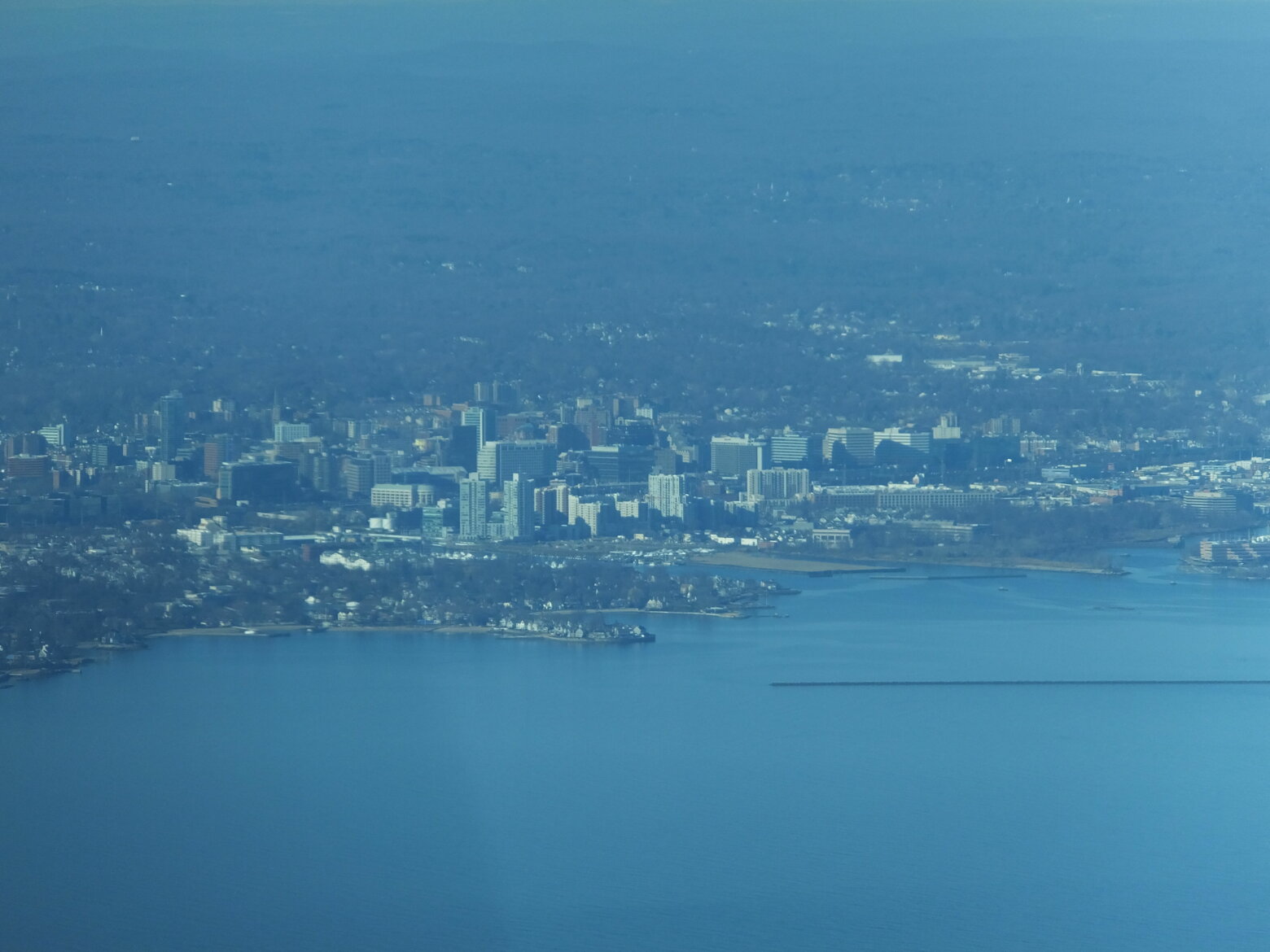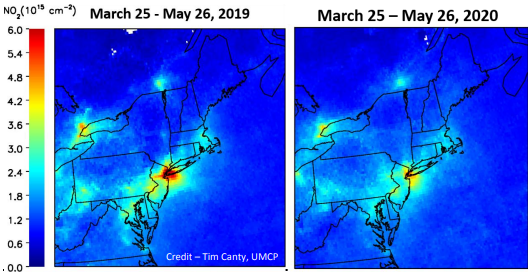
The COVID-19 pandemic has changed just about everything, including what’s in the air we breathe. A new report breaks down the positive difference the effects of pandemic-related restrictions have made on air pollution.
Many who still had to go to work when the pandemic hit saw a silver lining firsthand: With most of the workforce at home, there was an estimated 50% to 80% fewer cars on the road, causing less traffic. The report said the air also became easier to breathe.

COVID-19 pandemic. The red in the satellite images correspond to about 2 ppb near the earth surface, within the air quality standard for NO2, but enough to make a lot of smog and possibly lead to an ozone event. (Courtesy University of Maryland College Park)
The report, released by the University of Maryland and the Maryland Department of Environment, found that between roughly mid-February and late May, levels of nitrogen oxide decreased by 15%, and carbon dioxide and carbon monoxide each fell by 30%.
It also found a 30% drop in black carbon, a pollutant linked to diesel fuel.
The significant decreases in air pollution are not surprising, according to Maryland Secretary of the Environment Ben Grumbles — traffic on Interstate 95 alone was down 50% at the beginning of March.
There is no denying the decrease in greenhouse gas emissions was a direct effect of people staying at home and traveling less, Grumbles said, adding that teleworking is “the wave of the future.”
The authors of the study say that as Maryland gradually moves away from a stay-at-home reality, the state continues to push to reach its goal of 300,000 zero-emissions vehicles by 2025 and stress the accessibility and convenience of using public transportation.
Currently, there are around 26,000 zero-emissions vehicles in Maryland, according to the Maryland Department of Environment.
- Sign up for WTOP alerts
- Latest coronavirus test results in DC, Maryland and Virginia
- Coronavirus FAQ: What you need to know
- Coronavirus resources: Get and give help in DC, Maryland and Virginia
- CDC redefines COVID-19 close contact, adds brief encounters
- White House weighs in on Fairfax teachers’ union virtual-learning stance
- Amid talk of reopening rollback, Montgomery Co.’s coronavirus numbers under scrutiny
Looking for more information? D.C., Maryland and Virginia are each releasing more data every day. Visit their official sites here: Virginia | Maryland | D.C.








